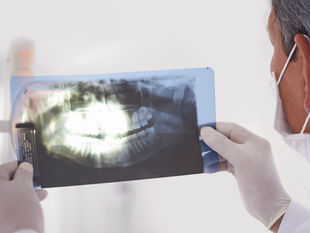
The Link Between Trigger Point Injections and TMJ Relief: How Targeted Injections Can Alleviate Jaw Pain—and How They Differ from Botox
Apr 17
3 min read
2
47
0
What is a Trigger Point Injection?
Trigger point injections (TPIs) are a medical treatment used to relieve myofascial pain caused by tight, irritable areas in muscles, commonly known as “knots.” These trigger points can cause both localized and referred pain, especially in the context of temporomandibular disorders (TMD). TPIs involve injecting a small amount of anesthetic (and sometimes saline or corticosteroid) directly into the trigger point to relax the muscle and break the cycle of pain and tightness.
🧠 According to the NCBI Bookshelf, TPIs reduce pain by disrupting the contracted muscle fibers, increasing blood flow, and removing metabolic waste, which promotes healing.
How TPIs Help with TMJ and Jaw Pain
Many TMD cases are driven by myofascial pain in key muscles around the jaw, including the masseter, temporalis, and medial pterygoid. These muscles are often overused in habits like clenching and grinding (bruxism) or held in sustained tension from stress or poor posture.
By targeting trigger points in these muscles, TPIs can:
Reduce referred pain to the teeth, ear, temple, and jaw
Improve jaw mobility and reduce stiffness
Break cycles of muscle spasm and inflammation
Referred Pain Patterns: Why do my teeth hurt but the dentist can't find anything wrong with them?
This may be due to referred pain, meaning pain that travels outside of the borders of the anatomical structure - a technical way of saying your muscles can cause your teeth to ache, feel sore, or have dull background pain.
It is important to always rule out any cavities, gum disease or need for root canal treatment before coming to an orofacial pain specialist. Some of the main muscles of chewing can cause pain in the teeth when inflamed, such as the temporalis and masseter muscles.
Understanding these patterns helps specialists determine where your pain is coming from and treat accordingly.
How Is a Trigger Point Injection Different from Botox for Bruxism?
Both trigger point injections and Botox injections can reduce jaw pain, but they work in distinct ways and are used for different treatment goals:
Feature | Trigger Point Injections (TPI) | Botox Injections |
Main Ingredient | Local anesthetic (e.g., lidocaine) | Botulinum toxin |
Mechanism | Breaks muscle knots and improves circulation | Temporarily weakens muscle activity |
Primary Use | Targeting and releasing specific trigger points | Reducing excessive clenching/bruxism |
Effect Duration | Days to weeks; may need repeat sessions | 3–6 months per treatment |
Muscle Function | Preserves strength and function | Reduces muscle strength (helps with overuse) |
Best For | Myofascial pain with localized trigger points | Chronic bruxism and muscle hypertrophy |
TPIs are often better for localized muscle pain, while Botox is more helpful when muscle overactivity leading to excess grinding force is the primary issue. In some complex cases, both treatments may be used together—but this should only be determined by a specialist after a full evaluation.
When to See an Orofacial Pain Specialist
If you're experiencing jaw pain, difficulty chewing, frequent headaches, or ear symptoms with no clear cause, it's time to see an orofacial pain specialist. A thorough examination can distinguish between joint problems, muscle dysfunction, or systemic conditions like rheumatoid arthritis or fibromyalgia that may mimic TMJ disorders.
Final Thoughts
Trigger point injections can offer significant relief for people suffering from jaw pain due to muscle tension and myofascial trigger points. When properly diagnosed and administered, TPIs are a safe, effective, and non-invasive way to improve quality of life. And knowing the difference between treatments like TPIs and Botox empowers you to ask the right questions and get care that actually works.
Looking for expert help? Contact our office today to schedule a consultation and learn if TPIs or another treatment option is right for you.










